Making Sense of Division
This week, your student will be thinking about the meanings of division to prepare to learn about division of fraction. Suppose we have 10 liters of water to divide into equal-size groups. We can think of the division
- “How many bottles can we fill with 10 liters if each bottle has 2 liters?”
- “How many liters are in each bottle if we divide 10 liters into 2 bottles?”
Here are two diagrams to show the two interpretations of

In both cases, the answer to the question is 5, but it could either mean “there are 5 bottles with 2 liters in each” or “there are 5 liters in each of the 2 bottles.”
Here is a task to try with your student:
- Write two different questions we can ask about
15÷6 . - Estimate the answer: Is it less than 1, equal to 1, or greater than 1? Explain your estimate.
- Find the answer to one of the questions you wrote. It might help to draw a picture.
Solution:
- Questions vary. Sample questions:
- A ribbon that is 15 inches long is divided into 6 equal sections. How long (in inches) is each section?
- A ribbon that is 15 inches is divided into 6-inch sections. How many sections are there?
- Greater than 1. Sample explanations:
12÷6 is 2, so15÷6 must be greater than 2.- If we divide 15 into 15 groups (
15÷15 ), we get 1. So if we divide 15 into 6, which is a smaller number of groups, the amount in each group must be greater than 1.
212 . Sample diagram:
Meanings of Fraction Division
Earlier, students learned that a division such as
This week, they use these ideas to divide fractions. For example,
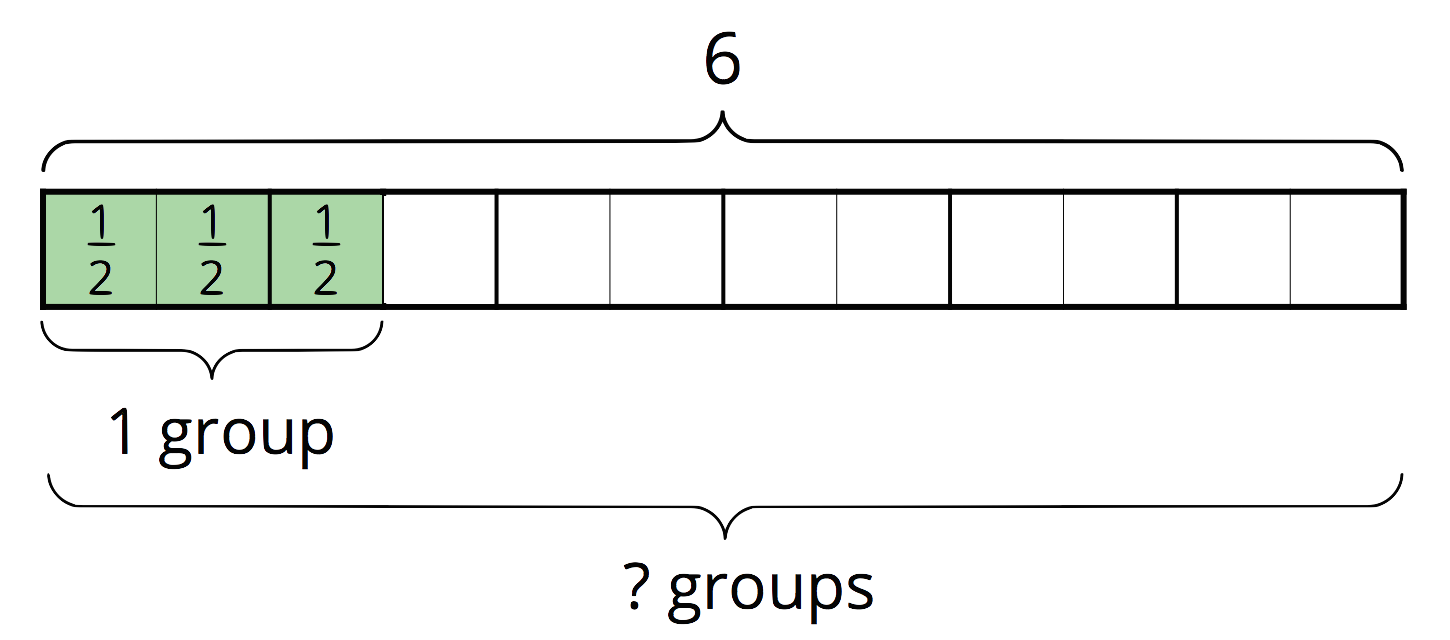
From the diagram we can count that there are 4 groups of
We can also think of

From the diagram we can see that if there are three
In both cases
Here is a task to try with your student:
- How many groups of
23 are in 5?- Write a division equation to represent the question. Use a “?” to represent the unknown amount.
- Find the answer. Explain or show your reasoning.
- A sack of flour weighs 4 pounds. A grocer is distributing the flour into equal-size bags.
- Write a question that
4÷25=? could represent in this situation. - Find the answer. Explain or show your reasoning.
- Write a question that
Solution:
5÷23=? 712 . Sample reasoning: There are 3 thirds in 1, so there are 15 thirds in 5. That means there are half as many two-thirds, or152 two-thirds, in 5.
- 4 pounds of flour are divided equally into bags of
25 -pound each. How many bags will there be? - 10 bags. Sample reasoning: Break every 1 pound into fifths and then count how many groups of
25 there are.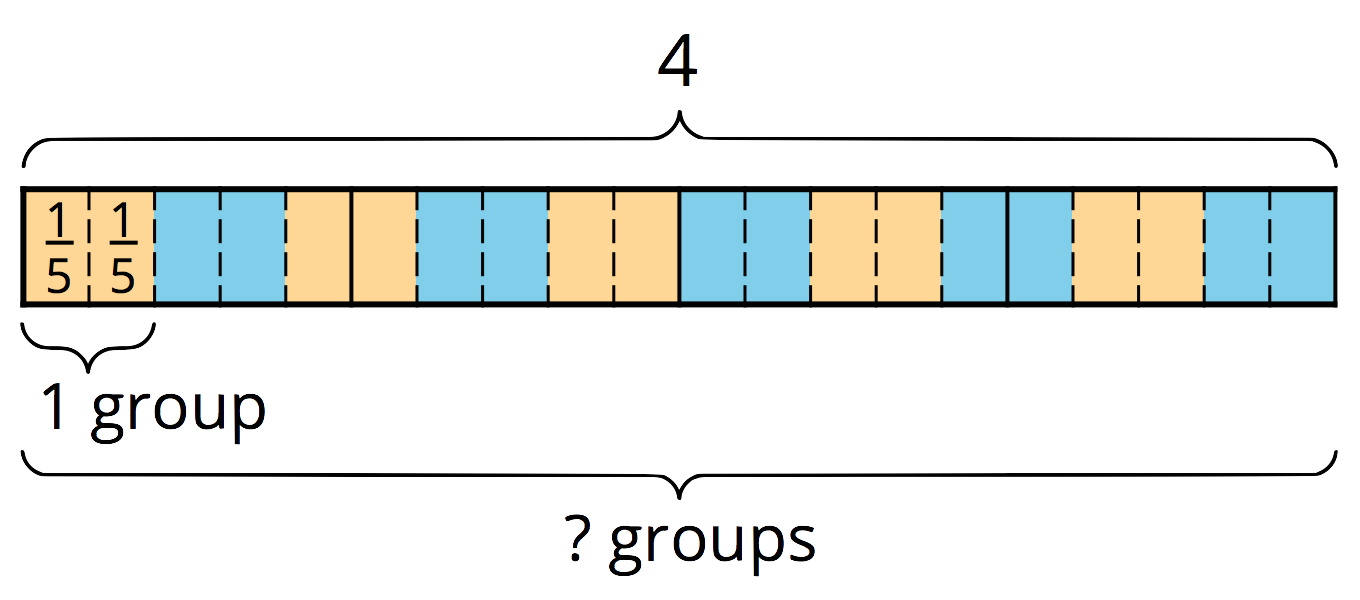
- 4 pounds of flour are divided equally into bags of
Algorithm for Fraction Division
Many people have learned that to divide a fraction, we “invert and multiply.” This week, your student will learn why this works by studying a series of division statements and diagrams such as these:
2÷13=? can be viewed as “how many13 s are in 2?”
Because there are 3 thirds in 1, there are
(2⋅3) or 6 thirds in 2. So dividing 2 by13 has the same outcome as multiplying 2 by 3.2÷23=? can be viewed as “how many23 s are in 2?”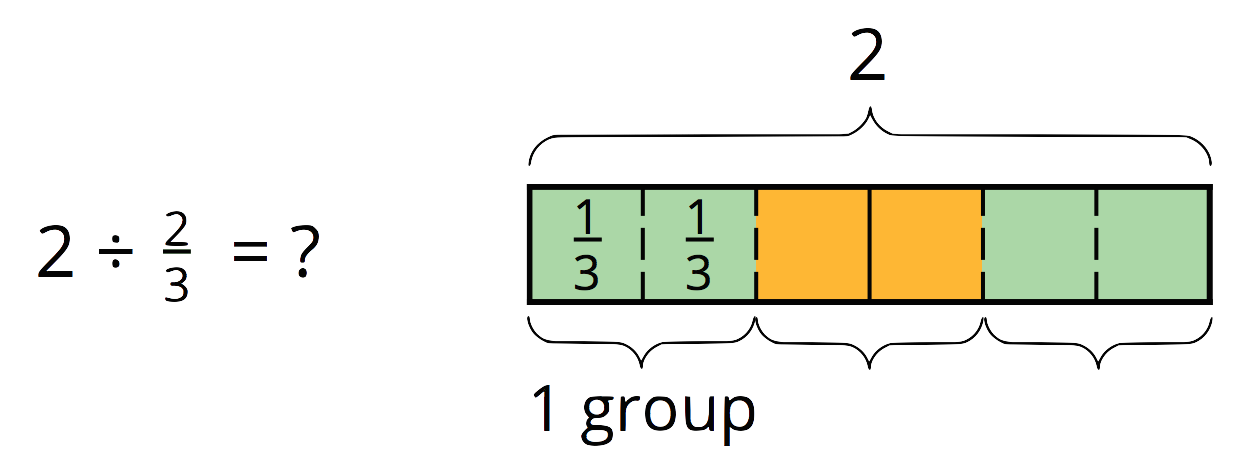
We already know that there are
(2⋅3) or 6 thirds in 2. To find how many23 s are in 2, we need to combine every 2 of the thirds into a group. Doing this results in half as many groups. So2÷23=(2⋅3)÷2 , which equals 3.2÷43=? can be viewed as “how many43 s are in 2?”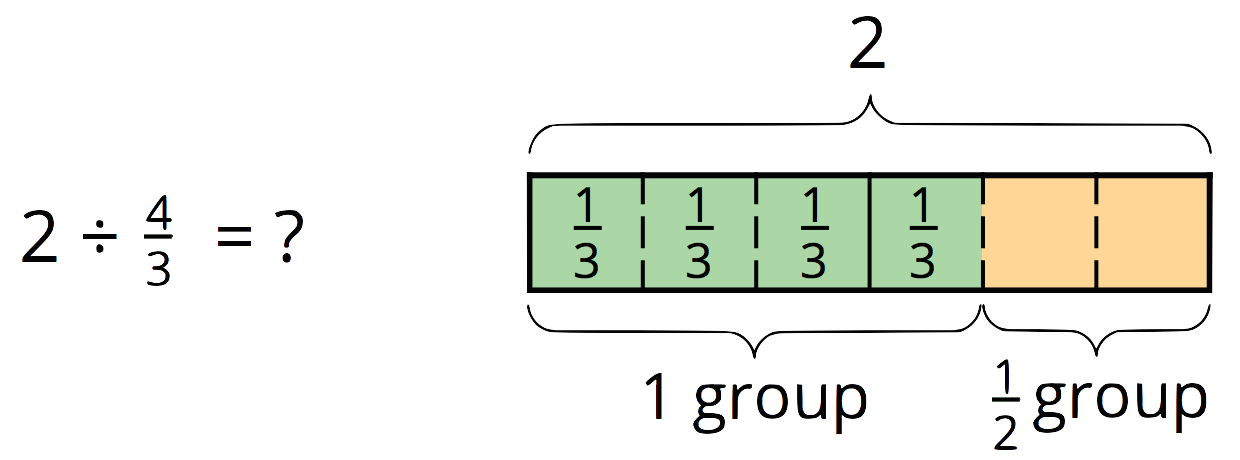
Again, we know that there are
(2⋅3) thirds in 2. To find how many43 s are in 2, we need to combine every 4 of the thirds into a group. Doing this results in one fourth as many groups. So2÷43=(2⋅3)÷4 , which equals112 .
Notice that each division problem above can be answered by multiplying 2 by the denominator of the divisor and then dividing it by the numerator. So
Here is a task to try with your student:
- Find each quotient. Show your reasoning.
3÷17 3÷37 3÷67 37÷67
- Which has a greater value:
910÷9100 or125÷625 ? Explain or show your reasoning.
Solution:
- 21. Sample reasoning:
3÷17=3⋅71=21 - 7. Sample reasoning:
3÷37=3⋅73=7 312 . Sample reasoning:3÷17=3⋅76=72 . The fraction67 is two times37 , so there are half as many67 s in 3 as there are37 s.12 . Sample reasoning:37÷67=37⋅76=36
- 21. Sample reasoning:
- The have the same value. Both equal 10.
910÷9100=910⋅1009=10 and125÷625=125⋅256=10 .
Fractions in Lengths, Areas, and Volumes
Over the next few days, your student will be solving problems that require multiplying and dividing fractions. Some of these problems will be about comparison. For example:
If Priya ran for
56 hour and Clare ran for32 hours, what fraction of Clare’s running time was Priya’s running time?We can draw a diagram and write a multiplication equation to make sense of the situation.
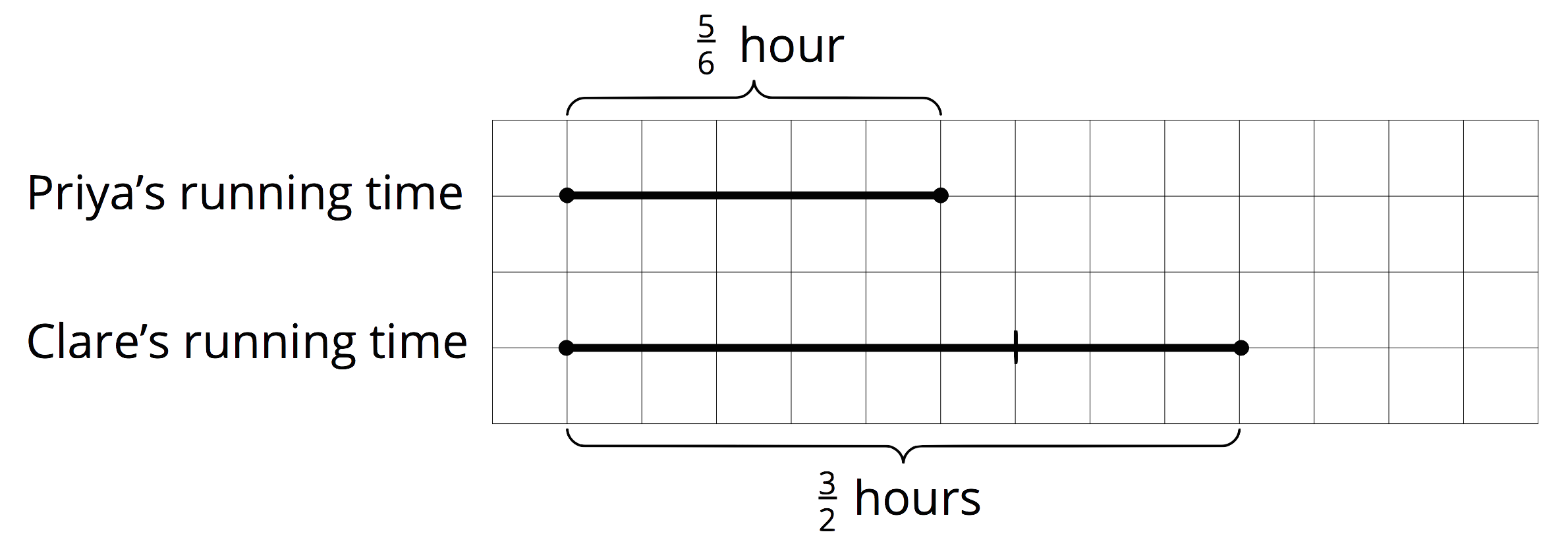
(fraction)⋅(Clare’s time)=(Priya’s time) We can find the unknown by dividing.?⋅32=56 56÷32=56⋅23 , which equals1018 . So Priya’s running time was1018 or59 of Clare’s.
Other problems your students will solve are related to geometry—lengths, areas, and volumes. For examples:
- What is the length of a rectangular room if its width is
212 meters and its area is1114 square meters?
We know that the area of a rectangle can be found by multiplying its length and width (
?⋅212=1114 ), so dividing1114÷212 (or454÷52 ) will give us the length of the room.454÷52=454⋅25=92 . The room is412 meters long. What is the volume of a box (a rectangular prism) that is
312 feet by 10 feet by14 foot?We can find the volume by multiplying the edge lengths.
312⋅10⋅14=72⋅10⋅14 , which equals708 . So the volume is708 or868 cubic feet.
Here is a task to try with your student:
- In the first example about Priya and Clare’s running times, how many times as long as Priya’s running time was Clare’s running time? Show your reasoning.
- The area of a rectangle is
203 square feet. What is its width if its length is43 feet? Show your reasoning.
Solution:
95 . Sample reasoning: We can write?⋅56=32 to represent the question “how many times of Priya’s running time was Clare’s running time?” and then solve by dividing.32÷56=32⋅65=1810 . Clare’s running time was1810 or95 as long as Priya’s.- 5 feet. Sample reasoning:
203÷43=203⋅34=204=5
IM 6–8 Math was originally developed by Open Up Resources and authored by Illustrative Mathematics, and is copyright 2017-2019 by Open Up Resources. It is licensed under the Creative Commons Attribution 4.0 International License (CC BY 4.0). OUR's 6–8 Math Curriculum is available at https://openupresources.org/math-curriculum/.